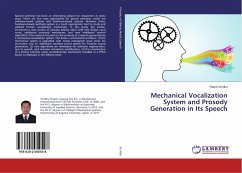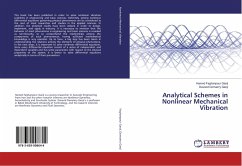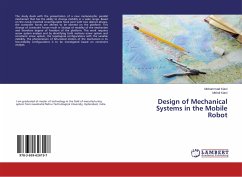Speech synthesis has been an interesting subject for researchers in many years. There are two main approaches for speech synthesis, which are software-based systems and hardware-based systems. Between them, hardware-based synthesis system is a much appropriate tool to study and validate human vocalization mechanism. In this study, the author introduces a new version of Sawada talking robot with new design vocal cords, additional unvoiced mechanism, and new intelligent control algorithms. This research focused on the prosody of a speech generated by a mechanical vocalization system. This book is summarized as follow: (1) the mechanical system is upgraded with newly redesigned vocal cords for intonation and an additional voiceless sound system for fricative sound generation, (2) new algorithms are developed for sentence regeneration, text to speech, and real-time interactive modification, (3) the introduction of a timing function using cerebellum-like mechanism installed in a FPGA board is employed in the talking robot.








